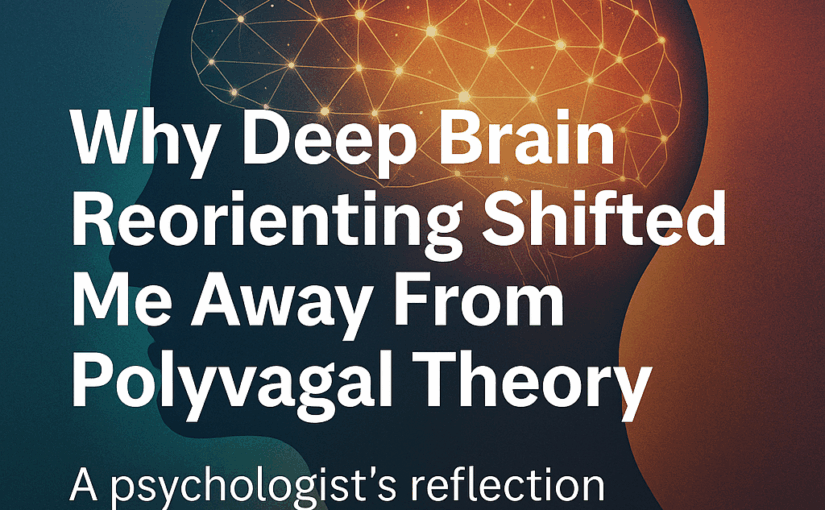Understanding Post‑Infidelity Stress Disorder (PISD) Through a Resource Therapy Lens
After infidelity, many betrayed partners report feeling paralysed, emotionally frozen between fear, longing, rage, and grief. This experience is often misunderstood as simply being “unable to move on.”
In reality, it reflects deep psychological trauma, increasingly recognised as Post‑Infidelity Stress Disorder (PISD).
Using a parts-based framework, such as Resource Therapy (Emmerson, 2014), we can make sense of this stuckness, and offer compassionate, targeted strategies for healing.
What Is Post‑Infidelity Stress Disorder?
Post‑Infidelity Stress Disorder (PISD) is a non-diagnostic term originally coined by clinical psychologist Dennis Ortman to describe PTSD-like symptoms experienced after discovering infidelity (as cited in Gupta, 2023). While not recognised in the DSM-5, PISD has gained traction among therapists and betrayed partners as a meaningful way to understand the intense emotional trauma that can follow a relational betrayal.
Symptoms of PISD often mirror those of post-traumatic stress disorder (PTSD) and may include:
- Hypervigilance and scanning for danger
- Emotional reactivity or shutdown
- Nightmares or mental replays
- Anxiety, confusion, and numbness
- Difficulty regulating trust—even in future relationships
These are not overreactions. They are survival responses from parts of the self trying to protect against further emotional injury (Emmerson, 2014; Gupta, 2023; Mays, 2023).
The Resource Therapy Perspective: Who’s on Deck?
In Resource Therapy, these trauma responses are understood as the voices of different Resource States—distinct personality parts that step forward to manage overwhelming emotional experiences.
For example:
- The hypervigilant part may be a Retro Protector State constantly scanning for betrayal to prevent more pain.
- The confused or foggy part may be a Vaded in Confusion State, frozen in endless loops of “Why did this happen?”
- The collapsed or despairing part may be a Vaded in Rejection or Fear State, reliving past attachment injuries.
Each part has a role, a voice, and a need. When these parts are unacknowledged or unsupported, they dominate the inner world—leaving the person feeling overwhelmed, stuck, and emotionally hijacked.
Why the Tug-of-War Feels Impossible
One of the most painful patterns in betrayal trauma is the internal push-pull between:
- “I want to stay, rebuild, and feel loved again…”
- “I cannot trust them or feel safe anymore.”
In Resource Therapy, we understand this as either:
- A Conflicted State, where two opposing Resource States are active at the same time—one pushing for reconnection, the other retreating in fear or anger
- Or a Vaded in Confusion State, where a part is paralysed in uncertainty and emotional fog, looping endlessly through “Why?”
These States cannot be “thought out of” with logic. They require part-specific access, emotional witnessing, and therapeutic relief (Emmerson, 2014).
When Early Attachment Wounds Reactivate
Infidelity rarely exists in a vacuum. For many, it reactivates older attachment injuries—from inconsistent parenting, abandonment, conditional love, or emotional neglect. These early wounds get stirred up, making the betrayal feel existential (Johnson, 2019; Levine & Heller, 2010).
Resource Therapy allows us to identify and work with the exact part that holds those early experiences. That part can be accessed, heard, and updated with new corrective experiences—creating genuine healing repair, not just coping.
Hypervigilance Is Not “Crazy”—It’s Protective
Betrayal often leads to a surge in behaviours like:
- Checking phones, emails, or locations
- Replaying conversations
- Watching for signs of micro-expression shifts or tone changes
These behaviours are sometimes labelled as “controlling” or “irrational.” But in Resource Therapy, we recognise these as the actions of Retro States—protector parts doing their best to avoid being blindsided again (Emmerson, 2014).
This is not pathology—it is protection.
The Physical Cost of Betrayal Trauma
Betrayal does not just affect the mind—it shows up in the body. A 2024 study found that individuals who experienced infidelity were significantly more likely to report long-term physical symptoms such as:
- Migraines
- Cardiovascular strain
- Gastrointestinal issues
- Sleep disruption
- Increased inflammatory responses (Oh & Hoy, 2024)
Even with strong external support, these physical manifestations can persist if the inner Resource States holding trauma are not accessed and treated.
Healing Is Possible—When the Right Part Is Heard
Traditional talk therapy may not reach the part of the self carrying the pain. This is where Resource Therapy offers a unique and effective solution.
Rather than working generically, RT provides part-specific, trauma-informed access:
- Vivify the part that needs help
- Bridge to the original wound or belief
- Express safely and fully
- Update the part with new resolution
- Anchor the person back in conscious control and present-day safety
When the right part is seen and heard, the stuckness begins to shift. Integration replaces paralysis. Peace becomes possible.
You Are Not Broken—You Are Carrying Too Much
If you are a betrayed partner, know this: the way you feel makes sense. You are not weak. You are not overreacting. Your Resource parts are working hard to protect you.
And if you are a therapist, Resource Therapy gives you the tools to guide this healing journey with clarity, safety, and profound results.
🛋️ Want to Help Clients Heal After Betrayal?
Join the Clinical Resource Therapy Training
📅 Starts 31 August 2025 – Online
👩⚕️ With Philipa Thornton, Psychologist & RTI President
🌐 www.resourcetherapy.com.au
📚 References
Emmerson, G. J. (2014). Resource Therapy Primer, Old Golden Point Press.
Freyd, J. J. (1996). Betrayal trauma: The logic of forgetting childhood abuse. Harvard University Press.
Gupta, S. (2023, November 15). Post-infidelity stress disorder: Symptoms, causes, and coping. VeryWell Mind. https://www.verywellmind.com/post-infidelity-stress-disorder-6374057
Gunther, R. (2017, September 29). How infidelity causes post-traumatic stress disorder. Psychology Today. https://www.psychologytoday.com/us/blog/rediscovering-love/201709/how-infidelity-causes-post-traumatic-stress-disorder
Johnson, S. M. (2019). Attachment theory in practice: Emotionally focused therapy (EFT) with individuals, couples, and families. Guilford Press.
Levine, A., & Heller, R. (2010). Attached: The new science of adult attachment and how it can help you find—and keep—love. TarcherPerigee.
Mays, M. (2023). The betrayal bind: How to heal when the one you love the most hurts you the worst. Central Recovery Press.
Oh, V. Y. S., & Hoy, E. Q. W. (2024, May 10). Being cheated on is linked to lasting health problems, study shows. PsyPost. https://www.psypost.org/new-infidelity-research-shows-being-cheated-on-is-linked-to-lasting-health-problems




